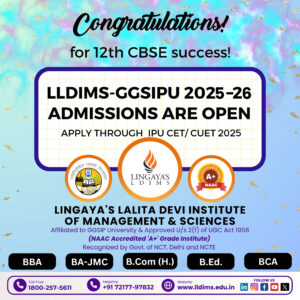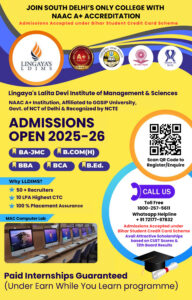
Your Gateway to Media Success: Unlocking Career Opportunities with a BAJMC Degree
The world of media is dynamic, ever-evolving, and brimming with opportunities. If you’re passionate about storytelling, communication, and shaping narratives, a Bachelor of Arts in Journalism and Mass Communication (BAJMC) is your ticket to a thrilling and rewarding career. But what exactly can you do with a BAJMC degree? Let’s explore the vast array of career paths that await you. A World of Possibilities: Career Opportunities After BAJMC A BAJMC degree is not just a piece of paper; it’s a passport to a diverse range of exciting careers in the media industry. Whether you aspire to be a journalist, a digital marketing guru, or a filmmaker, your BAJMC degree provides the foundation you need to succeed. 1. Journalism: The Heart of Storytelling Journalism remains a cornerstone of mass communication. With a BAJMC degree, you can pursue a career as: 2. Advertising: The Art of Persuasion The advertising industry thrives on creativity and strategic communication. Your BAJMC degree can open doors to roles such as: 3. Public Relations: Building and Maintaining Reputations Public relations professionals play a crucial role in shaping public perception. Your BAJMC degree can prepare you for roles like: 4. Digital Media: The Future of Communication The digital landscape is constantly evolving, creating a wealth of opportunities for BAJMC graduates: 5. Film and Television: Bringing Stories to Life If you’re passionate about visual storytelling, a BAJMC degree can lead to a career in film and television: 6. Corporate Communication: Communicating Business Narratives Many corporations need people skilled in communication to help manage the internal and external narratives of the company. More Avenues to Explore: Beyond these core areas, your BAJMC degree can also lead to careers in: Why a BAJMC Degree is Your Gateway to Media Success: A BAJMC degree provides you with a versatile skill set that is highly valued in the media industry. You’ll develop strong communication, critical thinking, and creative skills, preparing you for a wide range of career opportunities. The degree also provides you with important networking opportunities, and often internships, that help you start your career. In conclusion, a BAJMC degree is a valuable investment in your future. It opens doors to a diverse and exciting range of career paths, allowing you to pursue your passion and make a meaningful impact in the world of media. We’re here to help! For more details, you can: * Call the Admission Office: +91 88008-38255 * Email: info@lldims.org.in * Visit the Website: www.lldims.edu.in * Visit the Campus: LLDIMS, Mandi Hills, Near Chhatarpur Metro Station By- Isha Shah







